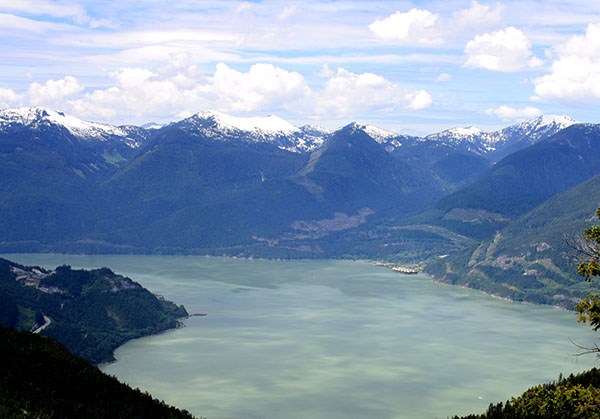If you want to raise the temperature in West Vancouver, talk about liquefied natural gas.
The prospect of an LNG plant in Squamish elicited almost uniform disdain from both elected and unelected West Vancouverites Monday as council stood by an earlier resolution opposing tankers in Howe Sound.
Woodfibre Natural Gas Limited – part of the Pacific Oil and Gas group of companies – is seeking to liquefy and export 2.1 million tonnes of LNG per year, beginning as early as 2017. The $1.6-billion facility would ship 40 double-hulled LNG tankers to Asia each year.
Council unanimously called on the federal government to ban LNG tankers from Howe Sound in July. The vote was marred by confusion with a few councillors later admitting they weren’t sure just what they were voting for.
After facing unprecedented criticism from West Vancouver-Sunshine Coast-Sea to Sky MP John Weston for taking the stance, council arranged to hear from the plant’s proponents.
Any fears of council backpedaling from their initial resolution were quickly quashed as several councillors bashed the project, pausing only to wait for the gallery’s raucous applause to die down.
Mayor Michael Smith recounted his first dealings with ExxonMobil in 1976, when company representatives stressed the safety of shipping oil and the infinitesimal chances of a spill.
“We all know how that turned out,” said Smith, who has owned and managed a business that is the wholesale distributor for the oil company.
After hearing from Woodfibre LNG, Smith said he stood by council’s prior resolution.
“You can minimize the risk but you can’t remove all the risk,” he said.
Proponents of the $1.6-billion Woodfibre LNG project began their presentation by ceding the floor to Squamish resident Brad Hodge, who painted a picture of a town with a bleak economy.
Hodge illustrated his point with a story about two minimum-wage earning parents getting into a heated argument about money after their child requested a fruit cup.
“I’ve had a front row seat to this for years. I’ve seen many businesses close, move or sell out,” he said.
Woodfibre LNG will provide 100 high-paying jobs and millions in taxes, according to Hodge, who previously noted the annual tax increases faced by Squamish residents.
“Yes, there are risks, but those risks can be controlled,” he said. “The industry has an excellent safety record.”
In emphasizing that safety record, Woodfibre project director Alex Brigden described how tugboats would escort slow-moving doubled-hulled LNG tankers through Howe Sound.
While stipulating that BC Ferries would be better suited to answer a question about navigational concerns, Brigden said there don’t seem to be concerns about tankers moving in close proximity to the ferries.
There is a precedent for similar operations in B.C., according to Brigden, who pointed to Fortis-operated plants on Tilbury Island in Delta and Mt. Hayes on Vancouver Island, both of which liquefy gas, albeit on a smaller scale than Woodfibre LNG.
Couns. Bill Soprovich and Nora Gambioli each noted the waste that used to leach from Britannia Mine and the damage it caused to Howe Sound.
When it comes to a potentially dirty industry around Howe Sound: “We don’t trust you or anybody,” Soprovich told the Woodfibre LNG representatives.
Twenty years of cleanup at the mine site will cost B.C. taxpayers $200 million, according to Gambioli.
“It will continue for 100 years,” she added.
Both the provincial and federal governments need to let go of their “Neanderthal economy visions,” according to Gambioli, who noted that B.C.’s tourism sector generates five times more jobs than the provincial oil and gas industry.
“We need to invest in tourism and in renewable energy sources which would create far more jobs and a better future for our kids, not to mention the planet. That should be the plan for Howe Sound,” she said.
Soprovich questioned Brigden about allegations of corruption lobbied against the company’s owner, Indonesian billionaire Sukanto Tanoto.
“As far as I know, that is not true,” responded Brigden.
Coun. Mary-Anne Booth asked several questions about a process that will pump 17,000 cubic metres of heated and chlorinated seawater back into Howe Sound every hour.
“I put chlorine in my swimming pool to kill everything,” she noted.
Concerns about chlorine are likely unfounded, according to Brigden, who said the amount used is less than what can be found in drinking water.
Coun. Michael Lewis did not attend the meeting.




